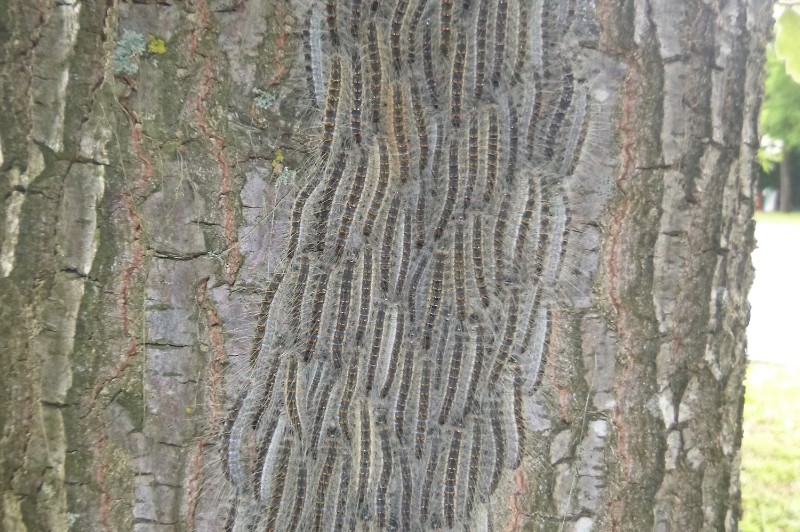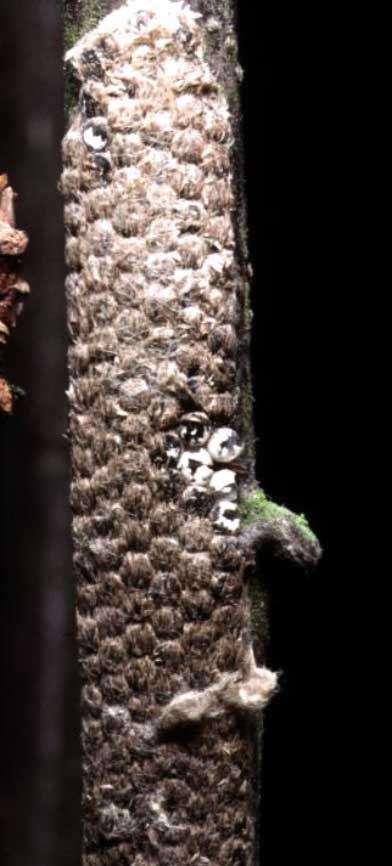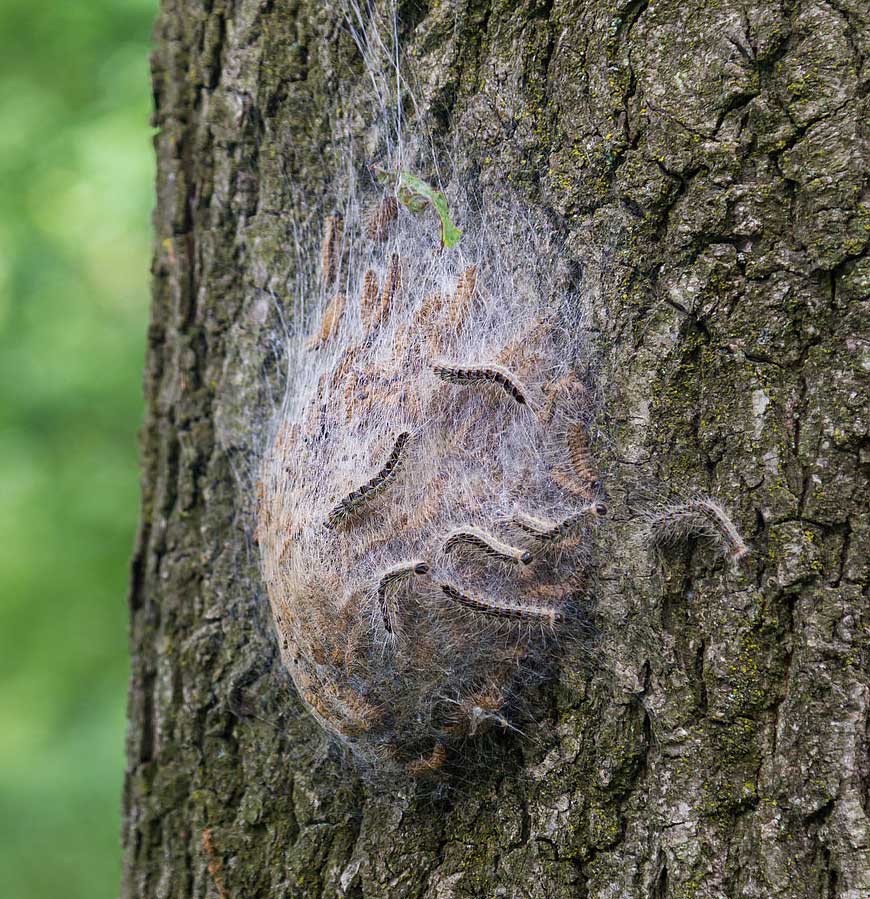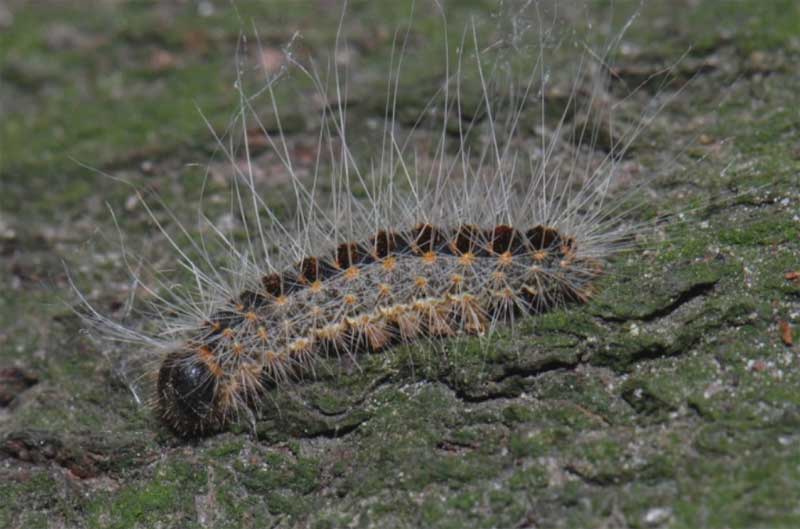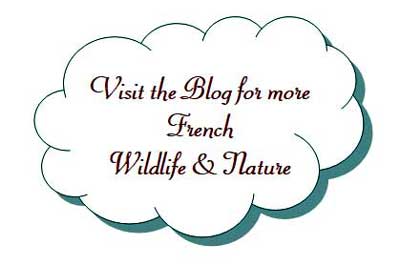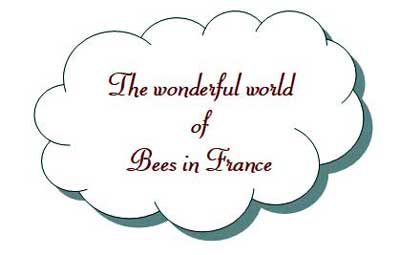Oak processionary moth
Thaumetopoea processionea
Processionnaire du chêne
The moths are on the wing from the end of June until mid September depending on the region and only have one generation a year. Having mated the females lay their eggs in the form of a thin strip on the trunk or more usually branches or twigs and average about 200 per laying. Where trees have been pollarded the eggs are often laid where the pollarding takes place. The eggs are covered with black scaly hairs from the abdominal end of the female. The eggs will remain there until the following spring before they hatch towards the end of February or during March.
The eggs hatch before the trees buds have burst and have no leaves. As long as the caterpillars don’t commence eating this doesn’t present any problem but once eating has commenced they must have a continuous source of food.
Following the eggs hatching the young caterpillars spin a silk protective nest where they will pass though 5 larval stages before pupation. The nest is constructed on the surface of the tree and not on the leaves. They leave the nest at night to feed on young leaves leaving a silk trail behind them to enable them to find their way back to the nest. The nest itself can become quite stretched as the caterpillars grow and it becomes laden with droppings.
Towards the end of June or the beginning of July the caterpillars weave a stronger nest and groups may combine. They pupate in this nest but due to the shortage of space it all ends up as masses of pupae cases stuck together.
As a general rule these caterpillars present a greatly reduced risk compared to the Pine Processionary as they rarely go to the ground. As such, people would normally only come into contact with them if they are working on oak trees, cutting them down or managing branches. Other possible contact could be children climbing in trees or accidental contact should the nest be lower than head height from the ground.
